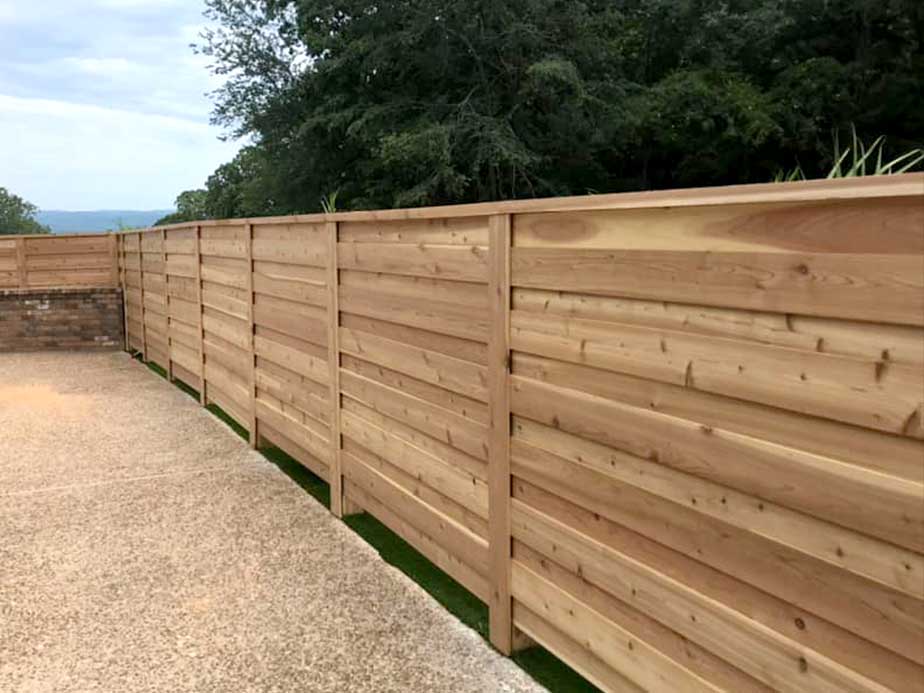All Categories
Featured

As sustainability comes to be a concern for companies and homeowners alike, the demand for environment-friendly items, including secure fencing products, has actually risen. Standard fence alternatives such as vinyl, steel, and timber can have negative environmental impacts, yet there are now numerous eco-conscious alternatives to take into consideration. Picking environment-friendly fence products not only aids minimize your carbon impact but also adds to a much more sustainable and natural atmosphere.
- Bamboo Fencing. Bamboo is just one of the most eco-friendly fence choices offered. Recognized for its fast development and marginal environmental impact, bamboo is a highly renewable resource. Unlike traditional woods, bamboo can be collected in a couple of years and grows back quickly, making it a sustainable option for secure fencing. It's strong, resilient, and resistant to bugs, offering a trendy and all-natural option for property owners.
Perks: Bamboo is fast-growing, light-weight, and sustainable. It requires fewer chemicals and plant foods contrasted to various other plants, making it a low-maintenance alternative. Factors to consider: While bamboo is durable, it may require routine upkeep to protect it from weathering and all-natural wear. It can likewise be at risk to splitting in cooler climates. 2. Recycled Products. Fencings made from recycled products are ending up being significantly preferred as an eco-friendly option. These fences are made from post-consumer plastic, recovered timber, and other recycled materials, maintaining waste out of garbage dumps. Utilizing recycled products decreases the demand for brand-new raw resources, reducing environmental degradation.

Perks: These fencings help in reducing waste and save natural resources. They are also often low-maintenance and long-lasting. Factors to consider: While recycled fencings can be resilient, the aesthetics may not always match typical secure fencing alternatives. Several styles are currently offered that resemble the look of wood or rock. 3. Compound Secure fencing. Composite fencing is made from a mix of recycled wood fibers and plastic, offering the look of timber without the environmental impact. Numerous composite fences are made from recycled material, further boosting their eco-friendly status. These fencings are durable, require marginal maintenance, and do not require to be treated with dangerous chemicals like typical wood fences.
Benefits: Compound fences are resilient, immune to rot, and require little maintenance. They additionally supply a comparable aesthetic to wood without deforestation issues. Considerations: While they are low-maintenance, composite fences may be more expensive than typical wood or vinyl options. The manufacturing process can likewise be energy-intensive. 4. Cedar and Redwood Fencing. Cedar and redwood are all-natural wood products that are typically considered much more environmentally friendly contrasted to other woods. These kinds of wood are normally immune to degeneration, pests, and wetness, which decreases the requirement for chemical therapies. Furthermore, these trees are expanded in lasting forests, making sure that they are gathered responsibly.
Perks: Cedar and redwood are both long lasting and naturally gorgeous materials. They supply all-natural resistance to parasites and rot, which aids lower the requirement for chemical therapies. Factors to consider: These woods can be a lot more pricey than other alternatives. They additionally call for periodic maintenance, such as tarnishing or securing, to guarantee long life. 5. Living Fencings (Hedges and Bushes) Living fences, made from bushes, trees, or bushes, are a green choice that likewise offers natural personal privacy and aesthetic allure. Plants such as privet, boxwood, bamboo, and arborvitae are frequently utilized for creating thick, environment-friendly fencings. These living obstacles assist with noise decrease, enhance air high quality, and offer habitat for regional wild animals.
Benefits: Living fences promote biodiversity, improve air high quality, and improve the visual allure of your building. They likewise take in co2 and add to a greener environment. Factors to consider: Living fences need upkeep, such as pruning and watering, to guarantee they grow effectively. They may not provide the very same level of security as traditional fence products. 6. Rock and Reclaimed Brick Fencing. Rock and recovered brick fencings are an additional green alternative. These materials are durable, require minimal maintenance, and have a lengthy life expectancy. When redeemed from old buildings or frameworks, they help in reducing the requirement for brand-new materials and prevent waste from entering landfills.
Advantages: Stone and block are durable, weather-resistant, and give an ageless, traditional aesthetic. Recovered products additionally have a minimal environmental impact. Factors to consider: The setup of stone and block fences can be labor-intensive, and the products might be a lot more costly than other options. However, the long-term toughness and low maintenance prices can make them a beneficial investment. Verdict. Selecting a green fencing product is a smart means to lower your environmental influence while enhancing your residential or commercial property's privacy and visual charm. Bamboo, recycled products, composite fence, and living fencings all provide sustainable alternatives that reduce waste, preserve resources, and advertise a greener way of life.
By picking among these eco-friendly secure fencing options, you add to the protection of the setting while creating a gorgeous, functional outside space. The appropriate product will depend on your choices, climate, and the degree of maintenance you're prepared to offer, however rest guaranteed that there are countless eco-conscious choices that align with your sustainable lifestyle.
Latest Posts
Include Convenience and Character to Your Home with Area Rugs
Published Apr 22, 25
1 min read
Montclare Auto Repair: The Trusted Choice for Expert Brake & Engine Fixes
Published Apr 22, 25
2 min read
Teenager Freedom Account: A Smart Start to Financial Self-reliance
Published Apr 22, 25
1 min read
More
Latest Posts
Include Convenience and Character to Your Home with Area Rugs
Published Apr 22, 25
1 min read
Montclare Auto Repair: The Trusted Choice for Expert Brake & Engine Fixes
Published Apr 22, 25
2 min read
Teenager Freedom Account: A Smart Start to Financial Self-reliance
Published Apr 22, 25
1 min read